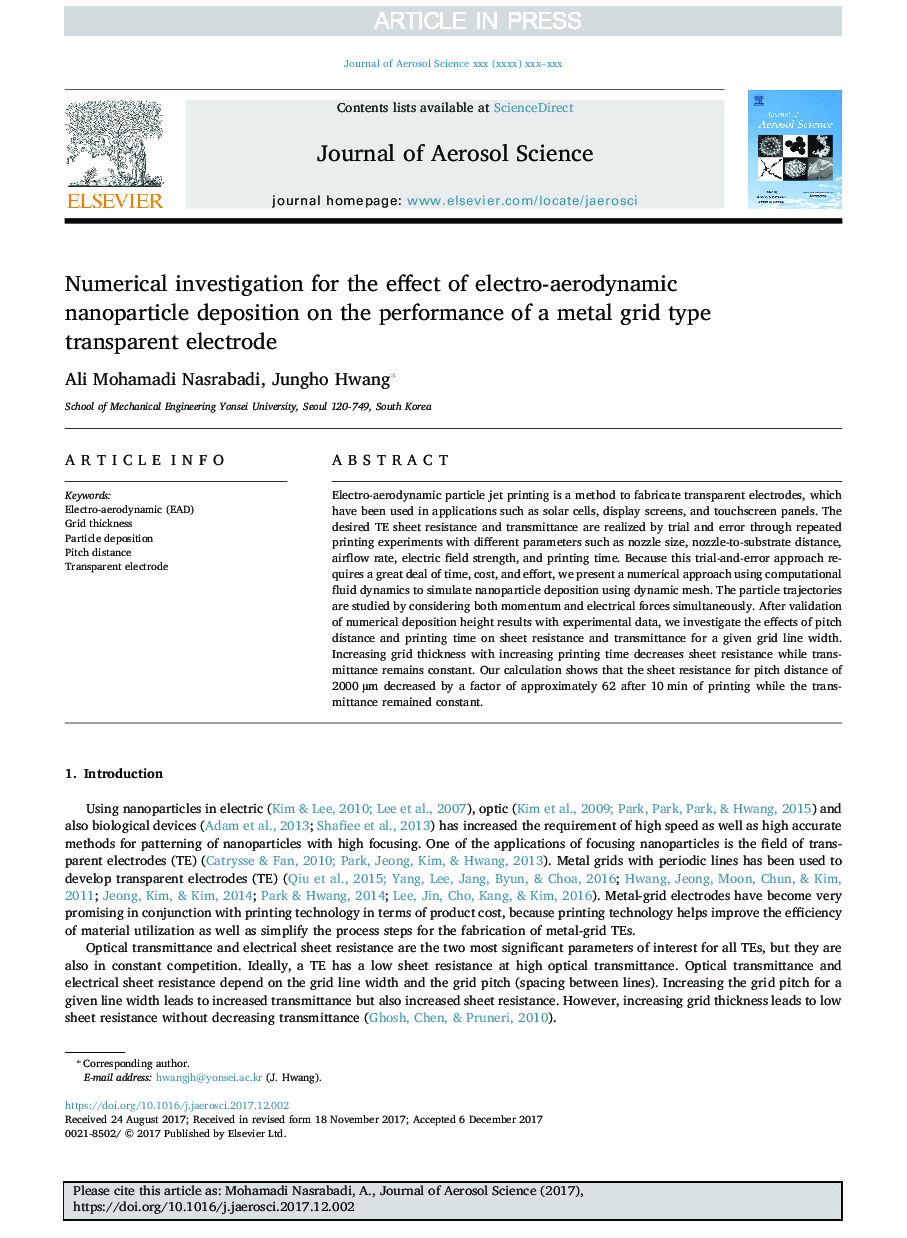| Article ID | Journal | Published Year | Pages | File Type |
|---|---|---|---|---|
| 8865313 | Journal of Aerosol Science | 2018 | 9 Pages |
Abstract
Electro-aerodynamic particle jet printing is a method to fabricate transparent electrodes, which have been used in applications such as solar cells, display screens, and touchscreen panels. The desired TE sheet resistance and transmittance are realized by trial and error through repeated printing experiments with different parameters such as nozzle size, nozzle-to-substrate distance, airflow rate, electric field strength, and printing time. Because this trial-and-error approach requires a great deal of time, cost, and effort, we present a numerical approach using computational fluid dynamics to simulate nanoparticle deposition using dynamic mesh. The particle trajectories are studied by considering both momentum and electrical forces simultaneously. After validation of numerical deposition height results with experimental data, we investigate the effects of pitch distance and printing time on sheet resistance and transmittance for a given grid line width. Increasing grid thickness with increasing printing time decreases sheet resistance while transmittance remains constant. Our calculation shows that the sheet resistance for pitch distance of 2000 µm decreased by a factor of approximately 62 after 10 min of printing while the transmittance remained constant.
Related Topics
Physical Sciences and Engineering
Earth and Planetary Sciences
Atmospheric Science
Authors
Ali Mohamadi Nasrabadi, Jungho Hwang,
